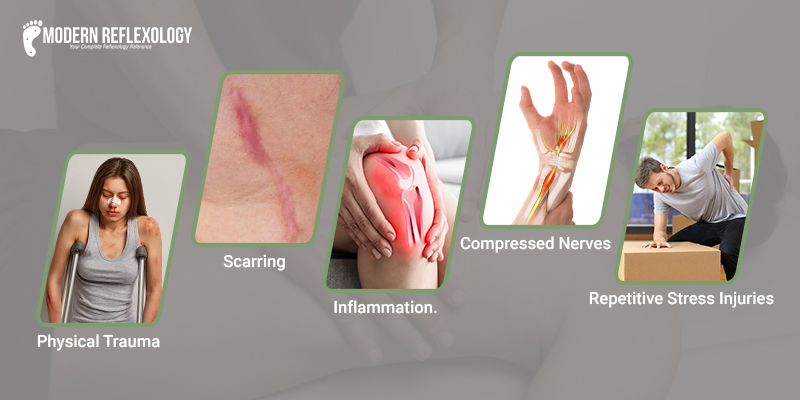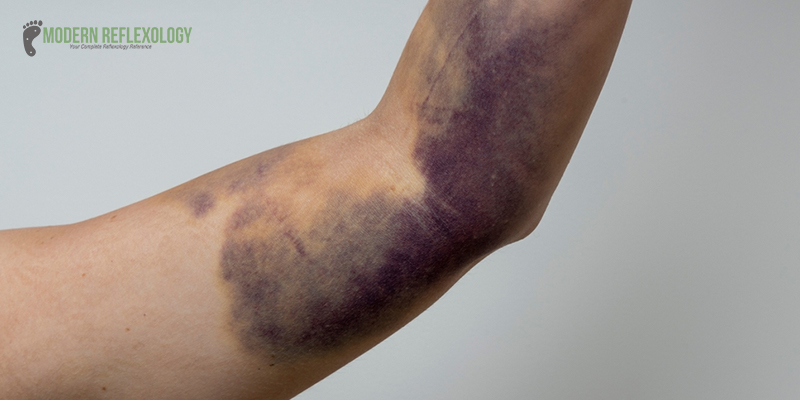One form of physical therapy called myofascial release is frequently used to treat myofascial pain syndrome, which is a persistent pain condition brought on by sensitivity and tightness in your myofascial tissues. Your body’s muscles are surrounded and supported by myofascial tissues. Typically, “trigger points” specific locations inside your myofascial tissues are where the discomfort starts. By releasing the tension and tightness in the trigger points, myofascial release aims to lessen discomfort. Knowing which trigger point is causing the discomfort is not always simple. It’s quite challenging to pinpoint a particular trigger spot for discomfort. Because of this, myofascial therapy release is frequently applied throughout a large region of muscle and tissue as opposed to specific spots.
What is Myofascial Therapy?
In massage therapy, myofascial release therapy is a common therapeutic approach. Myofascial tissues, the tough coverings that surround, connect, and support muscles, are the source of discomfort that is the focus of this therapy. Myofascial pain is distinct from other forms of pain because it frequently comes from “trigger points.” Stiff spots in the myofascial tissue are known as trigger points. But it’s frequently difficult to identify the exact discomfort that a trigger point produces.
To identify myofascial areas that feel rigid rather than elastic and malleable, the therapist using myofascial release treatment lightly presses on certain places with their hands. Widespread muscle pain may be exacerbated by these stiff spots, also known as trigger points, which are believed to restrict joint and muscle motion.
Myofascial massage therapy treatment involves massage and stretching techniques that can help release tight muscles and joints. This could lessen your back discomfort indirectly. Numerous studies have revealed that manual therapies such as massage, spine manipulation, and others are effective in treating back pain in addition to other treatments. However, myofascial release therapy has not been thoroughly studied in research, in part because different therapists employ different procedures when providing it.
Benefits of Myofascial Therapy

Anyone who experiences tension in their fascial tissues may benefit from myofascial trigger therapy. Those who have undergone myofascial release therapy may benefit from having:
- Physical trauma: Injuries sustained in falls, auto collisions, or whiplash.
- Scarring: As a result of burns, surgeries, or illnesses like frozen shoulders.
- Osteoarthritis, plantar fasciitis, bursitis, and other disorders can cause inflammation.
- Compressed nerves: resulting from carpal tunnel syndrome or herniated disks.
- Repetitive stress injuries: Caused by bad posture or excessive lifting.
Risks of Myofascial Therapy

There are virtually few hazards associated with massage therapy myofascial release. Massage therapy may be helpful for pain reduction whether you’re looking to unwind or relieve back discomfort. Massage isn’t the best for everyone, though:
- With deep vein thrombosis
- Problems related to deep veins with burns, wounds, or agonizing wounds
- Fractures or fractured bones with weak or fragile bones
- Using drugs that thin the blood
Rarely, receiving massage treatment may result in:
- Internal hemorrhage
- Momentary paralysis or trouble coordinating your movements
- Allergy resulting in nerve injury from oils, gels, or lotions
Self-Massage Techniques

If you have trouble spots, massage such areas for at least five minutes a day to prevent stiffness. If you experience any discomfort, lightly press the area of your skin with your fingertips. You’ve found the source of your stiffness if you experience tenderness when you apply pressure. It could hurt or be quite intense to release the knots on your own, much like when you see a professional therapist. Rub the area until you sense any tightness or relaxation, making more movement possible. Next, locate other sensitive places. You can get a foam roller or ball but don’t think that using these devices would make your issues go away. To release tension in your myofascial tissue and listen to your body, you must be patient and dedicated. By using these methods daily, you can avoid stiffness and tightness. Even though you could still have pain occasionally, your overall symptoms ought to get better with time.
Final Words
To sum up, this blog has given a thorough introduction to myofascial therapy, illuminating its guiding principles, methods, uses, and considerations. In alternative medicine, myofascial therapy is a promising strategy that provides a comprehensive approach to treating musculoskeletal problems and enhancing general health. We have examined the fundamental ideas of myofascial therapy during our investigation, stressing the role that fascia plays in preserving the body’s flexibility, mobility, and structural integrity. Myofascial therapists seek to relieve pain, increase range of motion, and improve physical performance by the application of manual techniques designed to release fascial limitations and restore normal tissue function.
We’ve also talked about the wide spectrum of ailments that myofascial therapy can successfully treat, such as sports injuries, postural abnormalities, chronic pain, and more. A range of treatments, customized to each person’s requirements and preferences, are used to target specific regions of tension and dysfunction, from trigger point release to fascial stretching and foam rolling.

Comments are closed